What Is Evolution and How Does It Happen?
Table of Contents
What is evolution?
In every field of scientific endeavor, there comes now and then a quantum shift in knowledge, a grand denouement of the way things are. In physics, we have Newton’s laws of mechanics, Einstein’s theories of Relativity, and the new theories of Quantum Mechanics. In Biology, we have the discovery of DNA and Darwinian Evolution.
It is hard to say how important Evolution was as an achievement. It did not have the immediate applications relativity did with nuclear power, or genetics does with the onset of gene therapy or GM food. But as a piece of pure science, a step of raw progress, evolution matches, if not eclipses them all.
In short, evolution gives us the keys to both the past and present of life. A constant question that has always plagued man is the question of “why” and “how” we came to be, and what we “will” become. Throughout history, philosophers, and even whole religions have based their raison d’etre on answering this great question. Evolution provides us with science’s answer, the answer is shown to us in the world around us.
Through evolution, we can see the past, the present, and the future as part of the vast tree of life, as an organic, ever-growing process that stretches into the horizons. We can appreciate the great fortune we have in being the way we are. We can realize the bounds of duty we have to preserve this beautiful and diverse tapestry. We can dispel some of man’s fundamental uncertainty as we find man’s true place in this little world. Evolution does not make life empty but lets us see its real colors.
But the great theory of evolution is important also for the questions it presents. It stimulated and continues to stimulate new progress in the field of biology like nothing else. It can be said that the triumphs of microbiology, immunology, and genetics benefited greatly from the debunking of the mysticism around the life that evolution created. Without these, the majority of us would not be alive today. It is in some way thanks to evolution that the life expectancy today is over 70, not under 30. In this way, the final gift of evolution to us is to roll back the shadows of ignorance. No longer do suffocating religion and traditionalism prevent our understanding of the mechanisms of life. With evolution, as with the Copernican theory of the sun-centric solar system, we have a sense of optimism and progress. It is no longer a matter of “the answers in genesis”, but a matter of open, productive debate. In a small way, the veiled man put over his head is removed. While creationism points us back to the past, evolution gives us the future.
How does evolution happen?
At its most basic, evolution consists of the following components:
1. Random variation
Across many species, there is always a great deal of variation between individuals. Look at your family. Though you are deeply linked to them by your kinship, there are significant differences. Some of these are merely environmental factors. Perhaps you suffered a disease in your past. But some are genetic. It is these that take part in evolution.
How does this genetic variation take place? One way is being the random mixing of alleles, and types of genes, achieved during sexual reproduction. Though a child is the genetic heir of their parents, their genetic makeup is almost certainly very different. Each individual in any given population, except identical twins, is unique. Whether anyone has a certain characteristic is up to chance. In this way, characteristics can spread around a population, mixing randomly.
The second mechanism of variation is random mutations. These are the real wildcards in evolution. Normally, during a person’s life, their cells divide millions of times per day. This is a natural process of maintenance in a being’s life – cells die and need replacing. In the division of cells, a key part is the replication of DNA, the part of the cell that makes it work. Normally, this is done flawlessly. But very occasionally, thanks to a chemical interference or maybe a lucky blast from random radiation, something goes wrong. Quite often, this error is repaired instantly. At other times, the error destroys the cell or causes cancer. But sometimes, the mutation is recessive and thus does nothing, or the conditions are not right or the mutation is beneficial to the cell. In this case, it can be incorporated into the genetic makeup of the new cell. The more often cell division occurs, the more likely a mutation happens. Single-celled life has very high rates of mutation, as do the skin, breast, and sex organs of more complex life forms. If these mutations happen in the production of gametes, like with sperm and eggs, the varied genes are passed on to the next generation. It is by this mechanism that new characteristics emerge.
2. Genetic inheritance
At Darwin’s time, the idea of inheritance was very blurred and vague. People knew that somehow, if you mated two black animals, you had a better chance of obtaining a black offspring than if you mated, say, a black and a white or even two white animals. But with the benefit of discoveries, we can better understand this factor of evolution.
In each creature, genes come in pairs called alleles. Each allele can come in two forms – recessive or dominant. For something to exhibit itself as a characteristic, it must either come as dominant and appear at least once in a pair or be recessive and appear on both parts of the gene. Suppose A is dominant and b is recessive:
- In the case of AA, we have the characteristic coded for by A.
- In the case of bb, we have the characteristic coded for by b.
- In the case of Ab, we have the characteristic coded for by A.
Now, in the case of asexual reproduction, the set of alleles, the DNA sequence of the original organism is exactly copied. But with sexual reproduction, half of the alleles of each parent are combined to make a full set. This means that the characteristics of each parent are combined uniquely. The more prevalent a gene is in the parents, the more likely it is to appear in the genotype of the offspring. Recessive genes can “hide” in the genetic makeup of a person without showing.
3. Natural Selection
Life is not an easy thing to maintain. Throughout any species’ existence, certain evolutionary pressures exist to force change. Individuals occupying the same niche naturally compete with each other, whether it is between individuals in the same species (INTRAspecific) or between different species (INTERspecific). It is a matter of fact that “nature is red in tooth and claw”. Competition can happen for several things:
- Territory
- Food
- Mates
Individuals who are tougher, smarter, stronger, and cuter are more likely to survive and grab hold of these assets than individuals who do not.
There are other factors too. Random environmental factors like changing weather conditions, new diseases, or the emergence of a new predator make sure only the most successful can survive. In some cases, this can work to offset the effects of intraspecific competition, as the species that are more social and those more sustainable would survive. The development of new antibiotics, for example, caused the emergence of many new, “resistant” types of bacteria in recent years, as man has generated the pressure to survive.
Obviously, the more successful individuals or species can proliferate and pass on the very same genes that made them successful. In this way, bad characteristics diminish in prevalence down the generations, neutral characteristics stay relatively the same, and good characteristics spread through the population.
But there’s more. Natural selection abhors waste. Useless characteristics, that do nothing but waste energy and resources are in fact disadvantages. In the end, the effect of the competition is to create the most efficient beings possible for the jobs of surviving and breeding. The important thing about evolutionary selection is that there is no final goal. Each step brings a small advantage or at least is neutral.
Thus, evolution comes from random mutations passing from generation to generation by inheritance, with adverse characteristics weeded out and beneficial characteristics allowed to increase in prevalence. New species emerge as varied pressures allow minor variations to diverge into new forms, and species die out when they can no longer compete in their niches. It may well seem miraculous that what is fundamentally random chance and implacable logic can lead to the complexity we see today, but we have good evidence this is indeed what happened.
I have a BS in Information Sciences from UW-Milwaukee. I’ve helped manage Physics Forums for over 22 years. I enjoy learning and discussing new scientific developments. STEM communication and policy are big interests as well. Currently a Sr. SEO Specialist at Shopify and writer at importsem.com

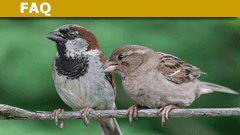

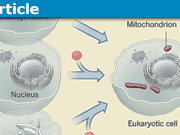
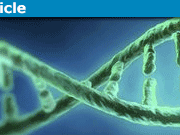
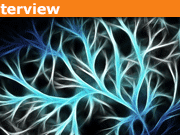

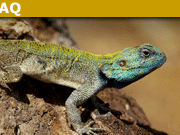
Leave a Reply
Want to join the discussion?Feel free to contribute!